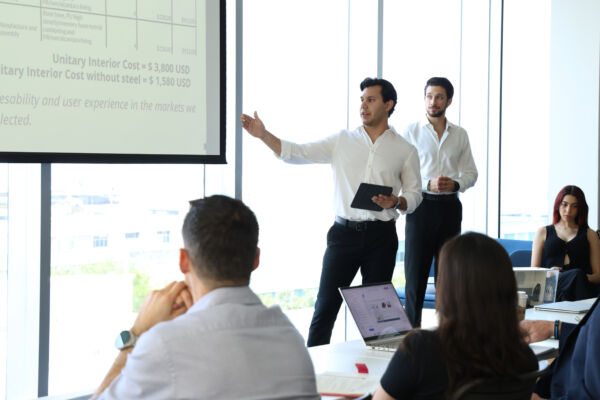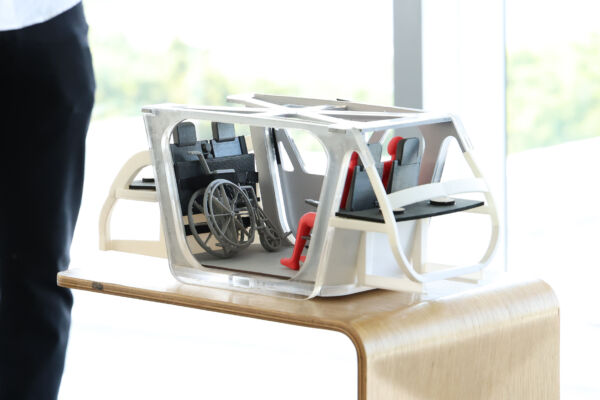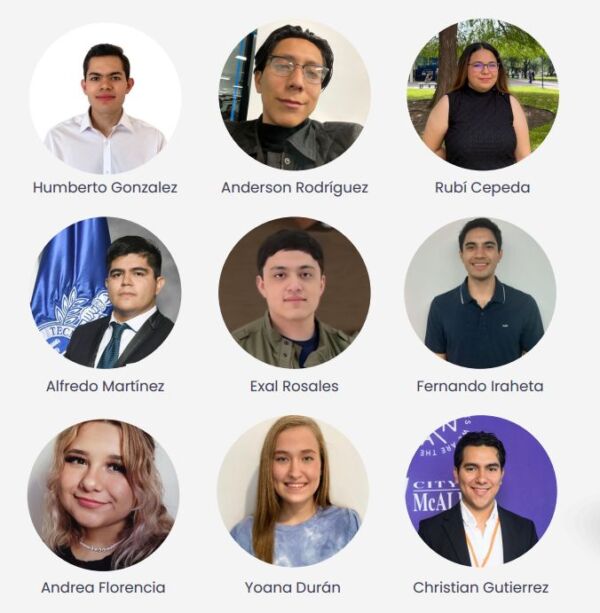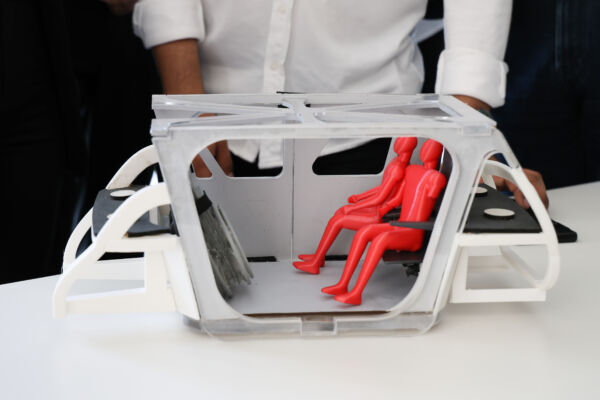WorldAutoSteel’s Steel E-Motive program showcases autonomous ride-sharing vehicle concepts (known as Mobility-as-a-Service or MAAS). It highlights steel’s strength and durability, with a critical focus on sustainability for reaching net zero emissions targets.
While these concepts feature the application of Advanced High-Strength Steels (AHSS) for safety and comfort, the specific interior design was not part of the project’s scope. Thanks to a program sponsored by member company Ternium, a group of talented industrial design and engineering students from Tecnologico de Monterrey rose to the challenge. Their innovative interior design solutions help move the Steel E-Motive project forward, providing additional interior-specific engineering data for automobile and future mobility manufacturers.
“We’re very proud to sponsor this important event,” said Juan Pablo Pedroza, Research and Development Senior Director, Ternium. “It underscores our commitment–both as an organization and an industry–to the future of automotive engineering.”
Steel E-Motive Student Design Challenge Requirements
The Ternium Student Interior Design Challenge began in March 2024 to create interior design concepts for the Steel E-Motive vehicle that addressed sustainability, functionality, aesthetics, safety, and feasibility.
 Eight teams participated in a nine-week intensive effort to develop their interpretations of designs that would meet these targets. Throughout the project, they were guided by professors and mentors from Ternium and WorldAutoSteel, who helped them better understand Steel E-Motive, the use of steel, and other important engineering considerations and rationale to aid in their design.
Eight teams participated in a nine-week intensive effort to develop their interpretations of designs that would meet these targets. Throughout the project, they were guided by professors and mentors from Ternium and WorldAutoSteel, who helped them better understand Steel E-Motive, the use of steel, and other important engineering considerations and rationale to aid in their design.
The challenge presented to the students was multifaceted and rigorous. The Ternium and WorldAutoSteel teams provided students with a comprehensive rubric that evaluated their work based on engineering and design criteria, including the quality and depth of their research, adherence to mass requirements, innovative use of steel and other eco-friendly materials, accommodation for standard and disability access, and the overall construction and presentation of their final models. The professionalism of their presentations was also a key factor in the evaluation process.
 Team One Takes the Win
Team One Takes the Win
After much deliberation, the judging panel unanimously selected Team One as the winner of the challenge. The judges were particularly impressed by the team’s innovative use of steel seat frames and access ramps, designed to complement Steel E-Motive exterior styling. Team One also stood out for creating a virtual reality (VR) application, which allowed the judges to fully immerse themselves in the winning design–an impressive feat accomplished within nine weeks.
Ternium and WorldAutoSteel announced the winning team during the International Mobility of the Future Summit, a Latin American conference focused on innovation in transportation mobility.

The winning team members were Javier Humberto González, Fernando José Iraheta, Anderson Manuel Rodríguez, Rubí Aseret Cepeda, Yoana Lucía Durán, Andrea Florencia, Alfredo Martínez, Exal Julián Rosales, and Christian Javier Gutiérrez–all students in the Innovation and Development Engineering program.
Attending the award announcement were Cees Ten Broek, Director, WorldAutoSteel; George Coates, Technical Director, WorldAutoSteel; Carlos Polidori, Chief Technology Officer, Ternium; and Juan Pablo Pedraza, Research and Development Senior Director, Ternium.
“The Team One students focused on making the vehicle convenient to access and did solid market research. They studied test standards for safety and materials to ensure Steel E-Motive’s seats and seat structures would comply with these standards,” observed George Coates, who also served as one of the challenge judges. “They specified steel grades for the seats and wheelchair ramps – and conducted simulations to determine loads, making sure strength levels of the seat frames were appropriate. They were also one of only a few teams that incorporated steel into the interior design, aligning with the themes of Steel E-Motive.”
 Why a Student Design Challenge for This Mobility-as-a-Service Vehicle?
Why a Student Design Challenge for This Mobility-as-a-Service Vehicle?
The Ternium Student Interior Design Challenge, and others like it, highlight the creativity and technical skills of engineering students, like those from Tecnologico de Monterrey. These young engineers helped us demonstrate the importance of innovative design in the future of mobility, particularly the use of advanced materials like steel and the incorporation of eco-friendly and accessible features.
“This student competition shows us the exceptional talent and creativity of today’s aspiring engineers and underscores the importance of innovation in the future of mobility,” said Cees ten Broek, WorldAutoSteel Director. “The integration of advanced materials like steel, eco-friendly design, and accessibility considerations helps support the automotive industry’s net-zero future.”
For their exceptional work, Team One will travel to Detroit to present their concept to select automotive manufacturers (OEMs) and explore local automotive attractions.
This latest challenge is the fifth in a series of collaborations with student engineers related to the Steel E-Motive project, including engagements with Michigan Technological University, The Ohio State University, Loughborough University, and an earlier external styling challenge with Tecnológico de Monterrey in 2021.
Download the free Engineering Report for the Steel E-Motive Mobility-as-a-Service vehicle here: https://bit.ly/SEM_Eng_Report
